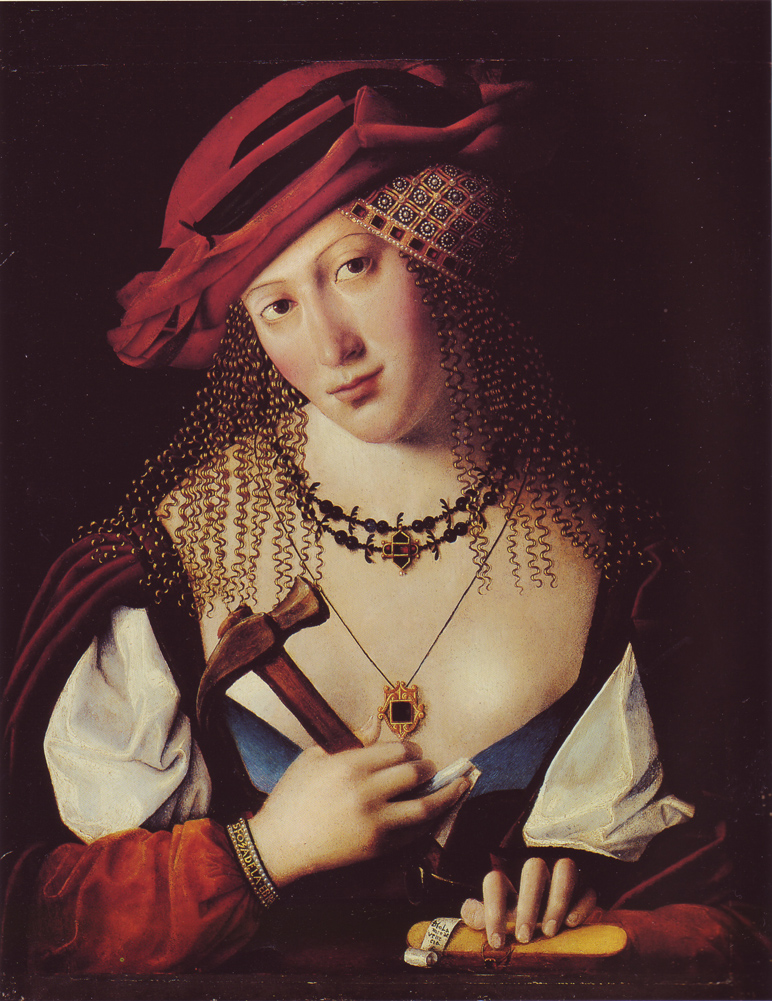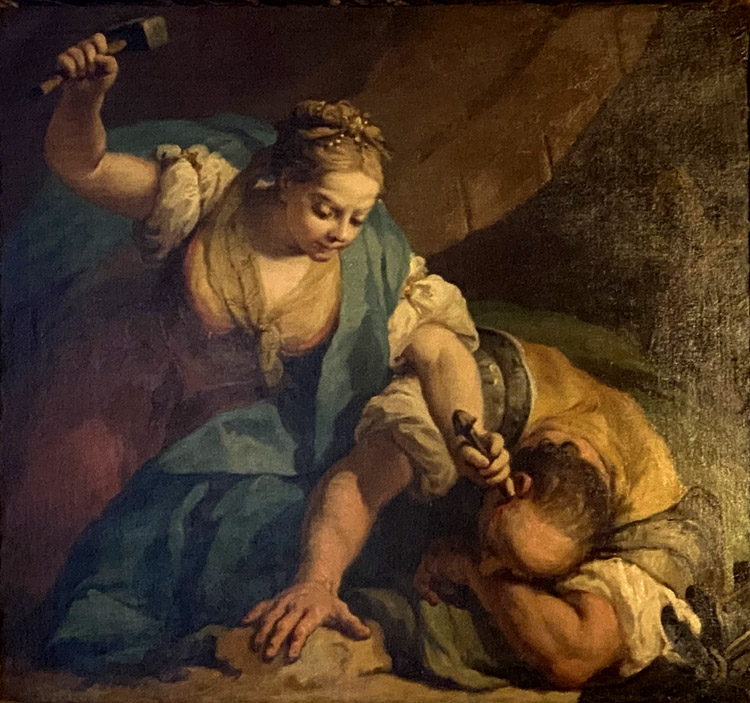In Christian exegesis Jael is a type of the Church and of the Virgin Mary. The Glossa Ordinaria quotes Origen as saying that as a foreigner "Jael signifies the Church, which is brought together from foreign nations. 'Jael' is interpreted 'ascension' because there is no ascension to Heaven except through the Church." Isidore of Seville relates her to the Church because in piercing Sisara's temple with a hammer and nail "she was a type of the Church, who slays the devil with the standard of the Cross."1
Because she dispatched Sisara with a nail to the head the Glossa makes her a figure of the Virgin Mary, the "woman" who in the commentaries on Genesis 3:15 was to "crush the head" of the serpent.2 In Judges 5:24-32, Deborah's victory song calls Jael "Blessed among women," Elizabeth's phrase characterizing the Virgin Mary in Luke 1:42 and famously adopted in the "Hail Mary" prayer. In the sculptures on the façade of Milan Cathedral Jael, Judith, and Eve appear above the three entrances as Old Testament types of Mary.
The art sometimes follows Deborah's account of Jael's victory and sometimes the slightly different version in Judges 4. Deborah calls Jael's hammer a malleus fabrorum, a carpenter or smith's hammer, which some artists reflect by picturing a hammer with claws, as in the first picture at right. But other artists may instead picture a maul,
 a possibility left open in the narrative in Judges 4, which calls it simply a malleus. The second picture at right is an example.
a possibility left open in the narrative in Judges 4, which calls it simply a malleus. The second picture at right is an example.
There is a similar ambiguity in the matter of the nail, which the song simply calls a clavus, "nail," but the narrative calls a clavus tabernaculi, a "tent peg." In some images the thing looks more like a nail, as in the second picture at right; in others it looks more like a peg, as in the third picture.
The King James version of Deborah's song says Jael "smote off his head, when she had pierced and stricken through his temples," but decapitation is not in the Vulgate, which would have been the source for medieval images. I have seen only one image of Jael with a severed head, a privately held sculpture from Guatemala that appears to be from the era of Spanish rule. The head could refer to some variant reading of Judges 5:26, or more likely it is simply intended to emphasize Jael's similarity to Judith.
The artists often picture Jael as a richly dressed aristocrat of their own era, as in the first and second pictures at right.
Prepared in 2014 by Richard Stracke, Emeritus Professor of English, Augusta University.
HOME PAGE

Portrait by Bartolomeo Veneto, early 16th century (See the description page)

Portrait by J. Spilberg, 1644 (See the description page)

Manuscript illumination from the 14th century (See the description page)
MORE IMAGES
- 1807-13: A relief sculpture of Jael killing Sisera, above the left entrance on the façade of Milan's cathedral. The creation of Eve is above the central entrance. and Judith's killing Holofernes above the entrance on the right.
NAMES
- "Sisera" is the English spelling; in Latin it is "Sisara."
NOTES
1 Glossa Ordinaria, II, 180. Isidore, Allegoriae, §77. Both passages translated by me.
2 Glossa Ordinaria I, 176 "Moraliter"; I, 101-102.